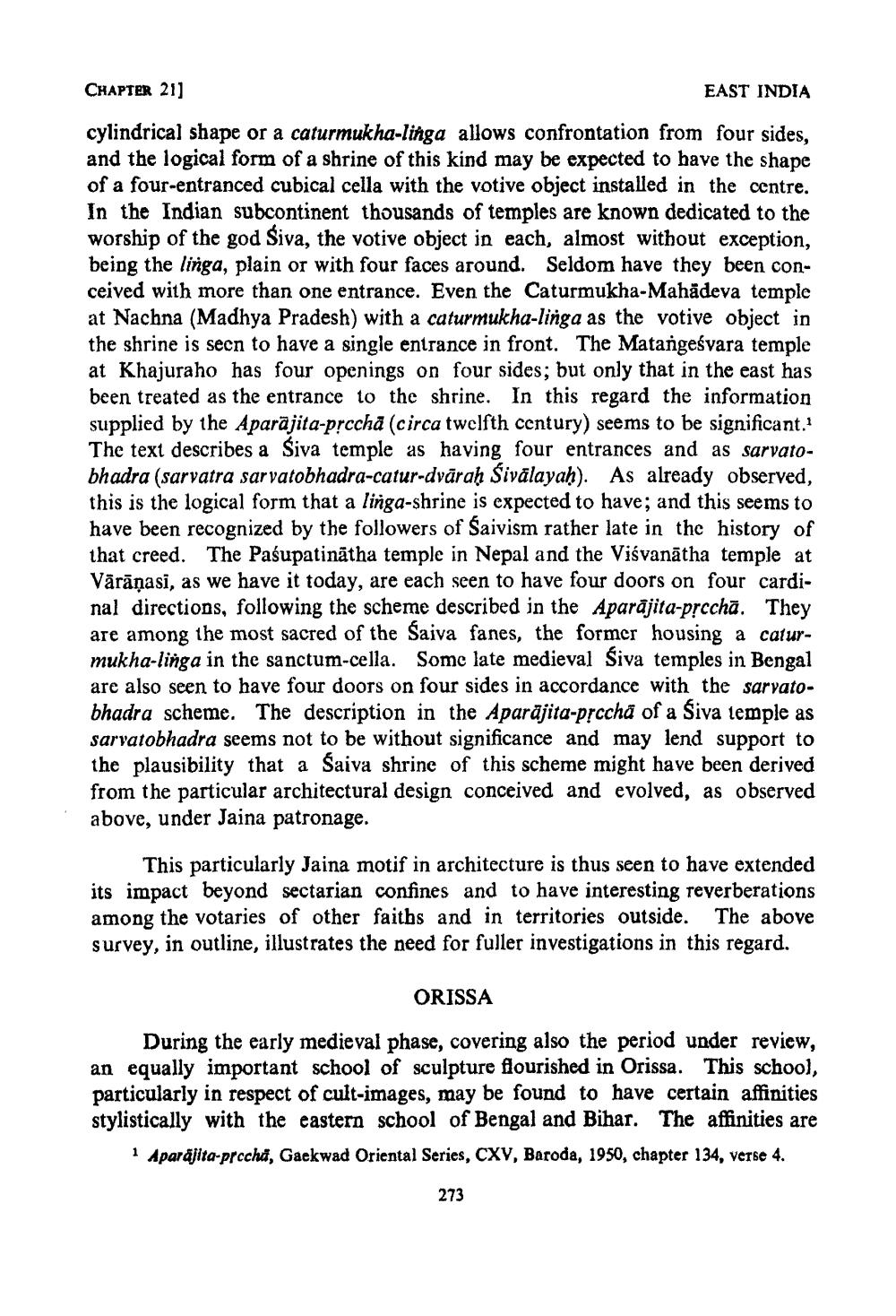________________
CHAPTER 21]
EAST INDIA
cylindrical shape or a caturmukha-linga allows confrontation from four sides, and the logical form of a shrine of this kind may be expected to have the shape of a four-entranced cubical cella with the votive object installed in the centre. In the Indian subcontinent thousands of temples are known dedicated to the worship of the god Siva, the votive object in each, almost without exception, being the linga, plain or with four faces around. Seldom have they been conceived with more than one entrance. Even the Caturmukha-Mahadeva temple at Nachna (Madhya Pradesh) with a caturmukha-linga as the votive object in the shrine is seen to have a single entrance in front. The Matangeśvara temple at Khajuraho has four openings on four sides; but only that in the east has been treated as the entrance to the shrine. In this regard the information supplied by the Aparajita-prccha (circa twelfth century) seems to be significant." The text describes a Siva temple as having four entrances and as sarvatobhadra (sarvatra sarvatobhadra-catur-dvārah Sivālayah). As already observed, this is the logical form that a linga-shrine is expected to have; and this seems to have been recognized by the followers of Saivism rather late in the history of that creed. The Pasupatinātha temple in Nepal and the Viśvanātha temple at Vārāṇasī, as we have it today, are each seen to have four doors on four cardinal directions, following the scheme described in the Aparājita-prcchā. They are among the most sacred of the Saiva fanes, the former housing a calurmukha-linga in the sanctum-cella. Some late medieval Śiva temples in Bengal are also seen to have four doors on four sides in accordance with the sarvatobhadra scheme. The description in the Aparăjita-prcchā of a Siva temple as
obhadra seems not to be without significance and may lend support to the plausibility that a Saiva shrine of this scheme might have been derived from the particular architectural design conceived and evolved, as observed above, under Jaina patronage.
This particularly Jaina motif in architecture is thus seen to have extended its impact beyond sectarian confines and to have interesting reverberations among the votaries of other faiths and in territories outside. The above survey, in outline, illustrates the need for fuller investigations in this regard.
ORISSA
During the early medieval phase, covering also the period under review, an equally important school of sculpture flourished in Orissa. This school, particularly in respect of cult-images, may be found to have certain affinities stylistically with the eastern school of Bengal and Bihar. The affinities are
1 Aparajita-prcchi, Gaekwad Oriental Series, CXV, Baroda, 1950, chapter 134, verse 4.
273




